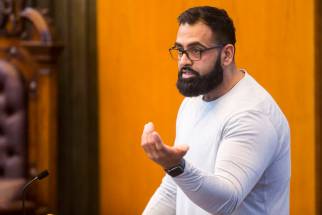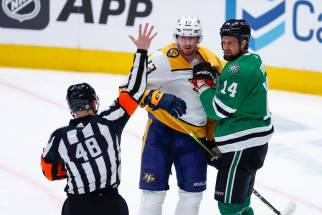Reclaiming the story, one smile at a time We Are Still Here is KC Adams’ hopeful, twinkling response to revelations of unmarked graves
Read this article for free:
or
Already have an account? Log in here »
To continue reading, please subscribe:
Monthly Digital Subscription
$0 for the first 4 weeks*
- Enjoy unlimited reading on winnipegfreepress.com
- Read the E-Edition, our digital replica newspaper
- Access News Break, our award-winning app
- Play interactive puzzles
*No charge for 4 weeks then price increases to the regular rate of $19.00 plus GST every four weeks. Offer available to new and qualified returning subscribers only. Cancel any time.
Monthly Digital Subscription
$4.75/week*
- Enjoy unlimited reading on winnipegfreepress.com
- Read the E-Edition, our digital replica newspaper
- Access News Break, our award-winning app
- Play interactive puzzles
*Billed as $19 plus GST every four weeks. Cancel any time.
To continue reading, please subscribe:
Add Free Press access to your Brandon Sun subscription for only an additional
$1 for the first 4 weeks*
*Your next subscription payment will increase by $1.00 and you will be charged $16.99 plus GST for four weeks. After four weeks, your payment will increase to $23.99 plus GST every four weeks.
Read unlimited articles for free today:
or
Already have an account? Log in here »
Hey there, time traveller!
This article was published 02/03/2022 (1376 days ago), so information in it may no longer be current.
Smiles are among the last gestures to expect in an art exhibition that responds to one of the saddest parts of Canadian history.
There are not one, but 12 grins on the faces of a dozen Indigenous children that Winnipeg artist KC Adams photographed for Giiyaabi Omaa Nindayaamin (We Are Still Here), her new online exhibition hosted by the Portrait Gallery of Canada.
The exhibition, which includes descriptions in English, French and Anishinaabemowin, can be viewed at portraitcanada.ca.
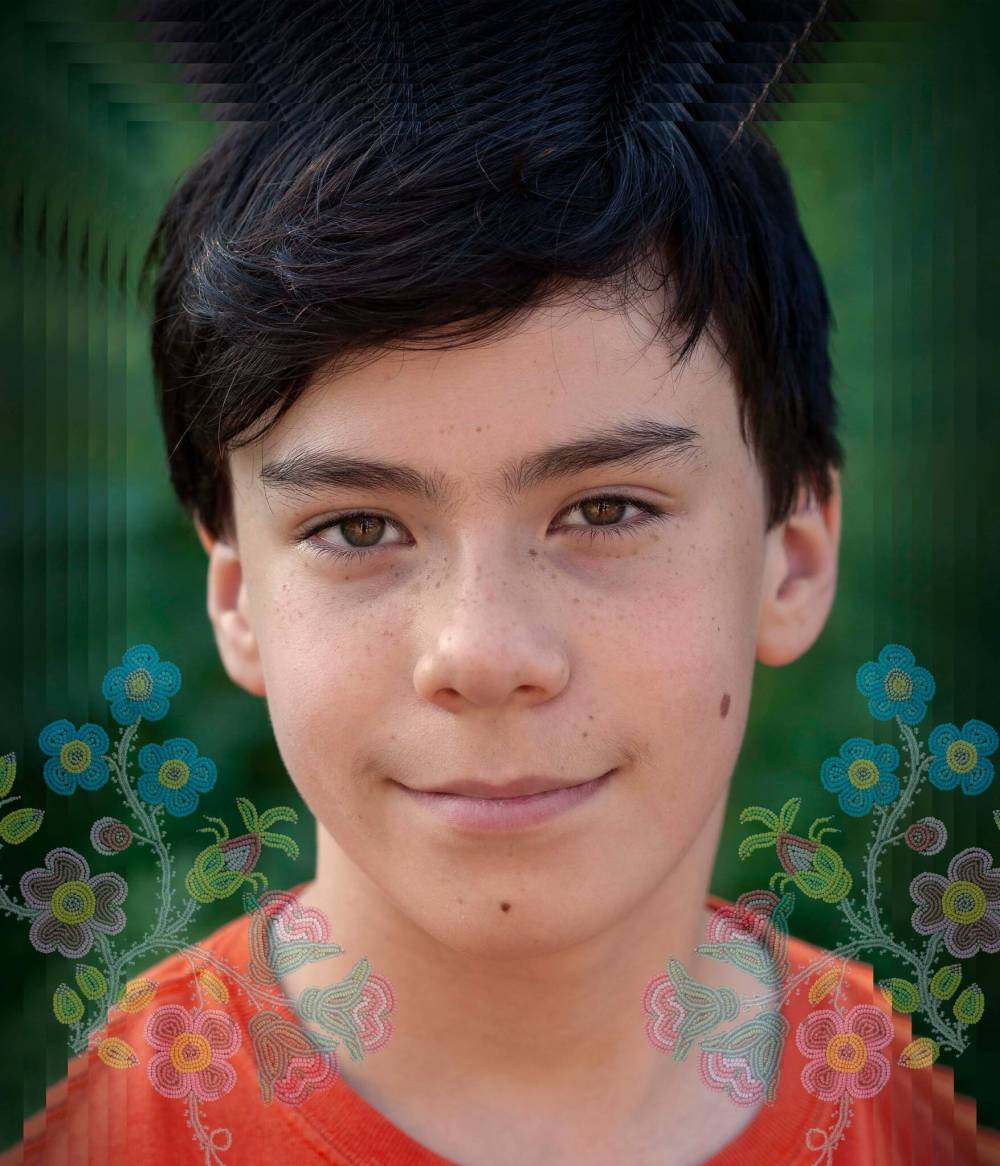
Adams took the pictures at The Forks on July 1 and 2, 2021 of children ranging in age from 5 to 16 — one child per age — as her reaction to the discovery of the remains of 215 children at a former residential school near Kamloops, B.C.
”When I heard that Canada Day was going to be cancelled, instead it was going to be a recognition of truth and reconciliation, I realized I knew what I needed to do. I needed to take pictures of kids who were the ages of kids being taken to residential schools,” Adams says.
The ear-to-ear grins on the kids weren’t just happenstance.
“It was really about celebrating who they are and what kind of teaching we can get from them,” Adams says. “These children, they’re the survivors, they’re thriving… They’re teaching us the importance of hope. They also teach us about living in the moment. Kids have an incredible ability to teach us these things. I really wanted to showcase that.”
Since the discovery by the Tk’emlups te Secwepemc Nation in British Columbia, more unmarked graves have been discovered across the country using ground-penetrating radar. Similar investigations are now taking place in Manitoba.
The Portrait Gallery of Canada, like most arts organizations across the country, has been reaching out to Indigenous artists in recent years, and in early 2021, it commissioned Adams, who is of Cree, Ojibwe and British ancestry, for an exhibition. Adams wanted to provide new art rather than a selection of previous works, says Ann Davis, a curator at the portrait gallery and a former curator at the Winnipeg Art Gallery.
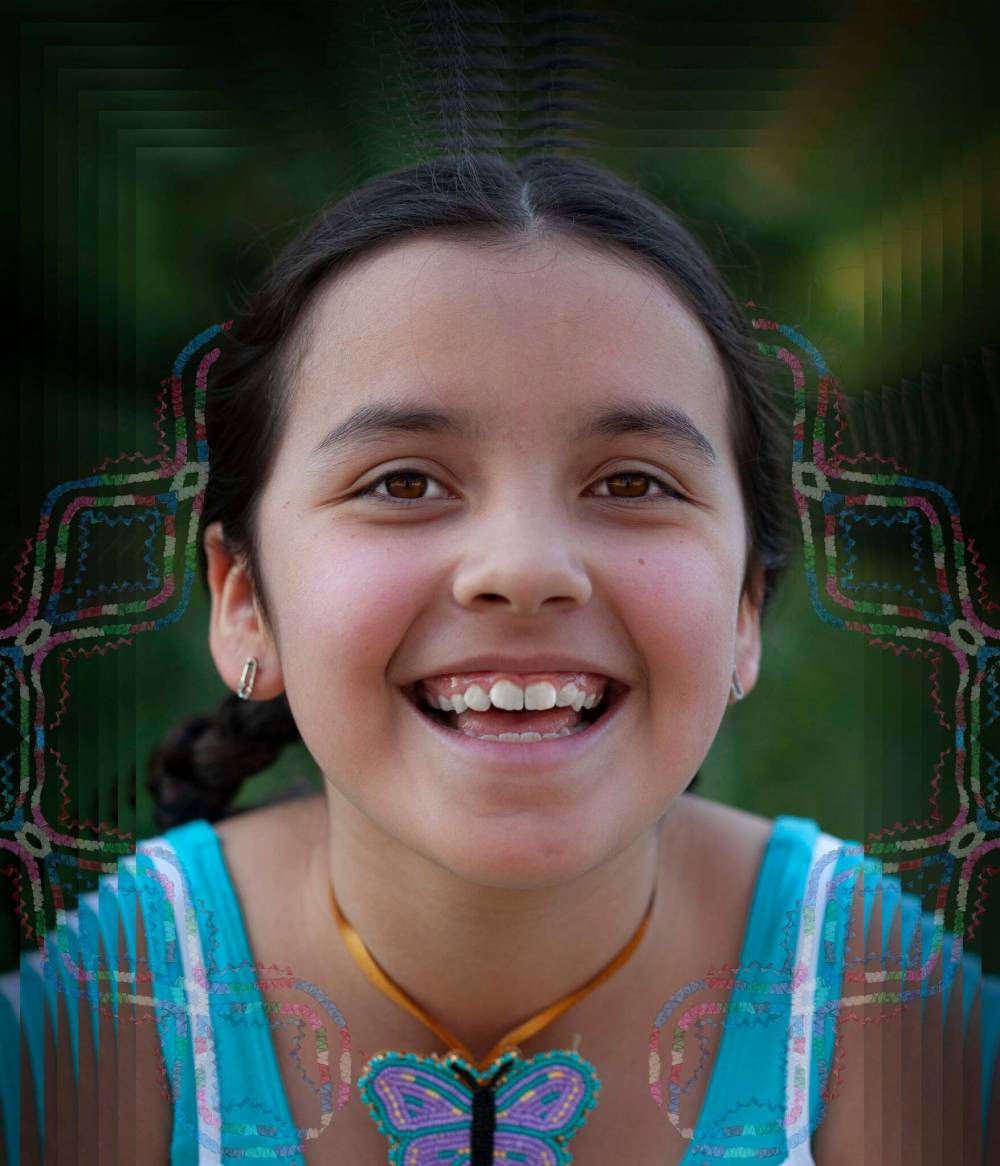
“KC very generously proposed a new exhibition of new work for us… very specifically reacting to the horrors, absolute horrors, of the discovery of more unmarked graves,” Davis says. “She wanted to think about this, but think about it in a sensitive way so that Indigenous communities and non-Indigenous communities can learn from it.
“We settler people have been so blind to the many qualities of Indigenous people, their histories, their accomplishments, and KC wanted to provide an exhibition which showed positive features. So she photographed these lovely children smiling, with flashing, twinkling eyes.”
At the Forks, Adams met families who agreed for their children to be photographed, and they became fast friends.
“I saw Felicia, she was my 16-year-old (in the exhibition), walking by with her family, and I thought ‘I need to take a picture of this girl,’ ” Adams remembers. “So I respectfully approached her family, and she recognized who I was. She knew my Perception photo series. She said, “Oh yeah, we learned about your work in school.’
‘She’s just really incredible, hopeful, just a smart person.”
There’s more to the 12 photographs than smiling faces though. Once Adams returned to her studio, she digitally enhanced each of the pictures, layering seven copies of the same image on top of one another and adding ceremonial aspects, such as quillwork and beadwork, to each one.
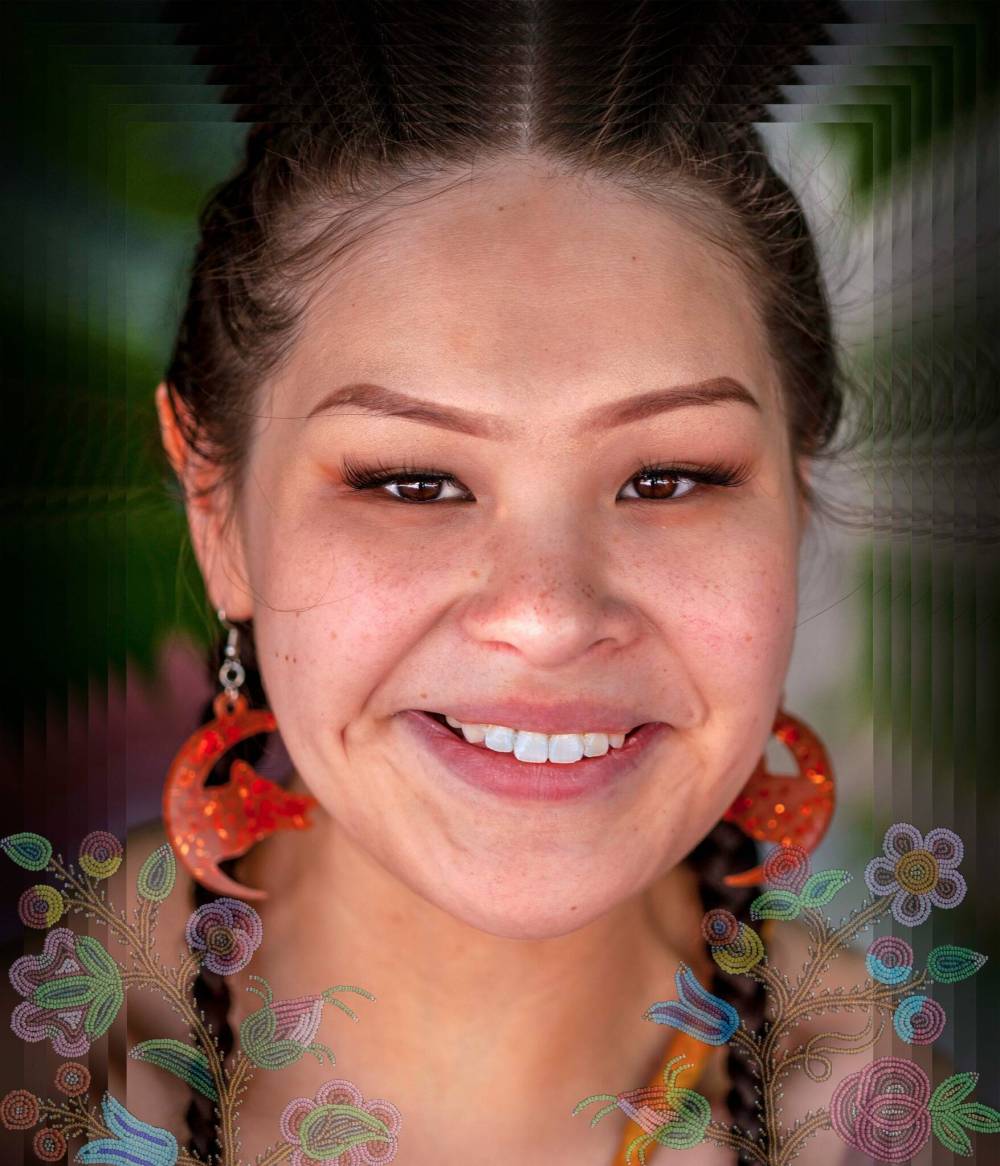
It was a painstaking process for Adams, 50, who has become an expert in several photo-editing programs during her career.
“It looks like it could be just a photograph, but there was a lot of editing that went into these photos,” she says.
The seven layers can be noticed around the edges of each photograph, and there’s significance behind the number of layers.
“It’s deeply embedded with knowledge, knowledge that has been passed down for hundreds and thousands of years, the idea we have to think about seven generations,” she says. “The original instructions is we look back three generations, and forward three generations, and we are in the centre, we are the seventh generation. The importance of taking care of ourselves, thinking about our ancestors three generations back and thinking about our future generations.”
The exhibition also has an educational component.
Intergenerational trauma still impacts Indigenous families, with descendants of residential school survivors having to learn about and confront the suffering of parents, grandparents and great-grandparents.
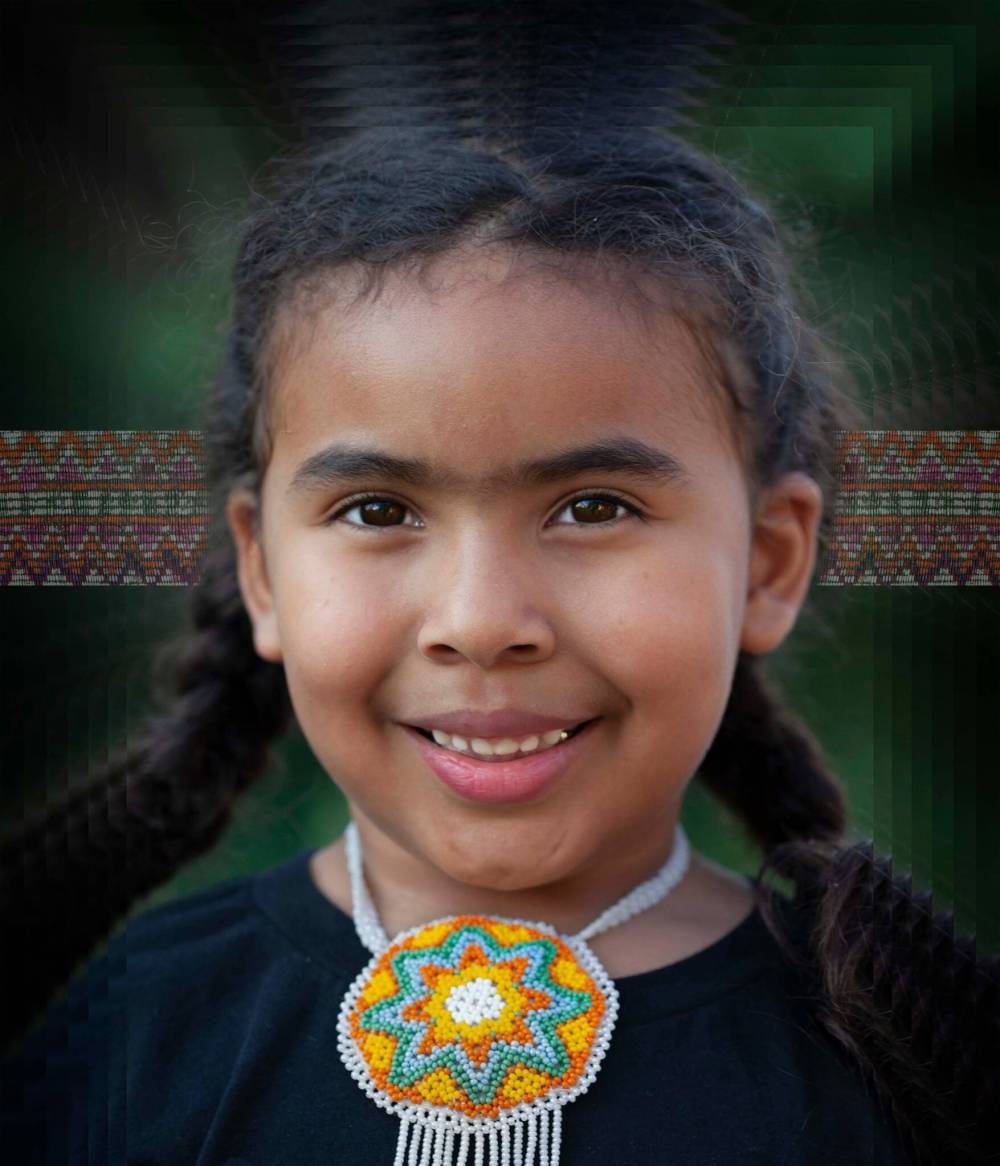
“I had two great-grandmothers who went to residential schools so my family feels the effects of it as well, the generational trauma of it all,” Adams says. “I thought I needed to take back the narrative, that we are still here, and we have actively resisted, and we have resilience and it’s shown in the kids.”
Alan.Small@winnipegfreepress.com
Twitter: @AlanDSmall

Alan Small has been a journalist at the Free Press for more than 22 years in a variety of roles, the latest being a reporter in the Arts and Life section.
Our newsroom depends on a growing audience of readers to power our journalism. If you are not a paid reader, please consider becoming a subscriber.
Our newsroom depends on its audience of readers to power our journalism. Thank you for your support.
History
Updated on Thursday, March 3, 2022 7:03 AM CST: Corrects spelling in headline, deck





